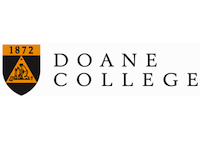Below is a summary of the abstract you submitted. Presenting author(s) is shown in bold.
If any changes need to be made, you can modify the abstract or change the authors.
You can also download a .docx version of this abstract.
If there are any problems, please email Dan at dar78@pitt.edu and he'll take care of them!
This abstract was last modified on March 22, 2024 at 4:34 p.m..

We extracted our phage BigShaq from an enriched soil sample in Marysville, Kansas in August of 2023. The phage was cultured on the host bacteria Gordonia terrae. The structure of the phage was examined using Transmission Electron Microscopy (TEM) which revealed that the phage was a siphovirus. This phage is lytic and belongs to the CS2 subcluster. BigShaq has a genome length of 76,650 base pairs, which is similar in length to most other annotated CS2 genomes. Auto-annotation predicts 102 protein-coding genes and one tRNA gene. The second phage genome we are annotating is a Gordonia terrae phage called HubbaBubba, found in Fort Collins, Colorado. Phage HubbaBubba, which is a part of the CR4 subcluster, is a lytic phage and a siphovirus with a genome of 63,959 base pairs. Auto-annotation predicts 88 genes for this phage. Using DNAMaster, Phamerator, Starterator, and BLAST data, we examined the predicted ORFs for coding potential and possible start sites. Future work will include calling the functions of genes.
